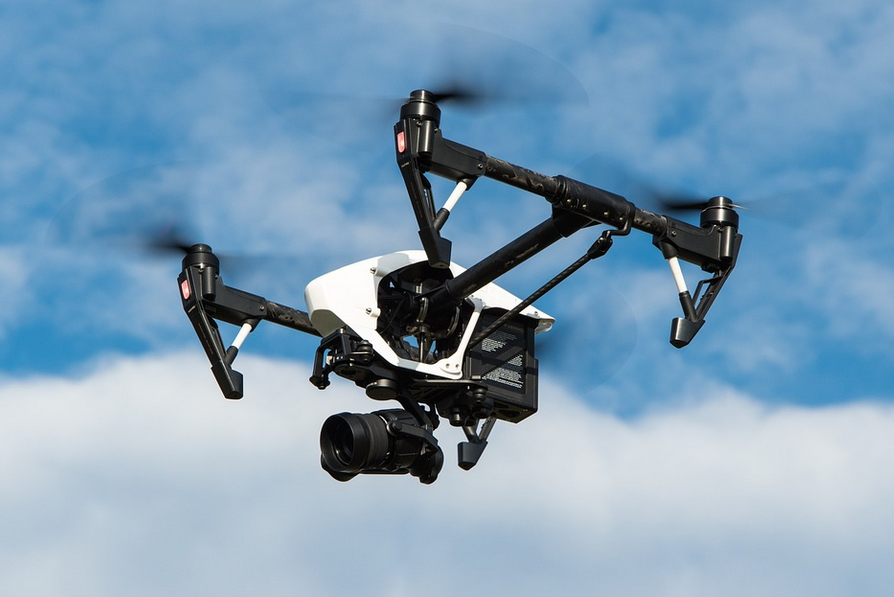Protect your privacy: A guide to avoiding drone surveillance

source: foxnews.com | image: pexels.com
It’s difficult to learn who owns a drone; some have their registration numbers visible, usually in case the owner loses sight of it.
I share a ton of tips to protect your privacy online. Do this quick 30-second check to keep your Google and Facebook accounts safe if you haven’t yet.
What about when you leave your home? Just about everywhere you go, you’re being watched.
Not all cameras are out in the open, either. I once found more than a dozen cameras in an Airbnb I rented. Here are my best tips for spotting hidden cams in a rental, new apartment, home, or hotel room. But now we have drones to deal with.
The internet is a dangerous place. Join over 400,000 people and stay updated with my free daily newsletter.
I spy with my eye a drone in the sky
The other day, I heard a familiar buzz while swimming in my backyard pool. Sure enough, a drone hovered overhead and quickly vanished when I shooed it away with my hand. That’s how I got the idea for this post.
The legality of drone surveillance varies by country and state, but if the drone is flying on your private property and recording you without your consent, call the police. It’s a violation of your privacy.
It’s difficult to learn who owns a drone. In my case, it flew out of my eyesight in seconds. Had my iPhone been within reach, I would have taken a photo of the drone. Some drones have their registration numbers visible, usually in case the owner loses sight of it.
ISRAELI POLICE FOIL DRONE ASSASSINATION ATTEMPT IN GANGLAND HIT
The Federal Aviation Administration (FAA) maintains a database of drone owners who have registered their drones with the FAA. To search the FAA drone owner database, you need the drone’s registration number. Here’s where to search the FAA drone owner database.
The things you should never do to a drone
There are effective, perfectly legal ways to avoid surveillance. There are also a few ways that are illegal for private citizens.
The Federal Aviation Administration legally protects drones from being:
- Shot at: Firing a gun into the sky is dangerous and illegal. Just don’t do it.
- Interfered physically: This includes lasers and other objects.
- Disabled or otherwise tampered with: Using a jammer and hacking are criminal acts.
There are other things you might be doing that break the law. Scan this list.
Now we have that out of the way, here’s what you can do.
Carry an umbrella
It might feel cumbersome, but an umbrella is a cheap and practical way to protect your privacy. In rainy or extra sunny weather, it’s a no-brainer. You might get some strange looks, but who cares?
Get one now while you’re thinking of it. This tiny umbrella is as big as a cell phone, so you could keep it in your pocket. This one is bigger but will hold up better in wind and rain.
There are tech products to protect your data and privacy in many ways. Tap or click for eight picks that can do everything from mute your mic to protect your credit cards.
Use your surroundings as cover
Own a drone or know someone who does? I bet you’ve had to deal with someone throwing something at it. That is not the right way to avoid drones.
You should take a more passive approach. In bad weather — heavy rain, fog, and wind — drones have difficulty flying or getting great footage. Score for you.
When it’s sunny and you see a drone buzzing overhead, find a place it’s less likely to spot you. Trees, alcoves, awnings, and tunnels are all excellent places to tuck away while the drone passes.
Use this free tool to find out if the police have your face saved to their database.
Wear an invisibility cloak
Get this: Researchers at the University of Maryland found that patterned sweaters can thwart AI systems.
These sweaters use the same images engineers use to train AI systems to recognize objects. Wear one, and instead of seeing you as a person, the system might interpret you as an animal, like a giraffe.
Fashion brands are catching on. Italian startup Cap_able sells clothes with these patterns that confuse facial recognition software, also known as “adversarial patches.”
Be warned, though: These garments are pricey. A hoodie will set you back about $450. Like all new inventions, you can expect the price to decrease if these catch on.
